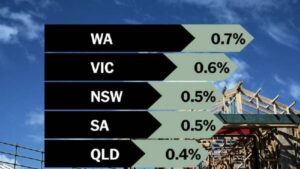UPDATE: The Reserve Bank of Australia (RBA) has just announced a groundbreaking proposal to abolish card payment surcharges, a change that could save Australian consumers a staggering $1.2 billion annually. This urgent reform aims to eliminate the additional fees that have become common in transactions from your morning coffee to taxi rides.
The RBA’s sweeping changes come after an eight-month review, revealing that surcharges, originally intended to highlight payment costs, no longer serve their purpose in a predominantly cashless society. With cash transactions dwindling to just 13% of in-person payments, the bank found that these fees now act more as penalties for convenience than useful price signals.
By 2025, Australians may no longer face those sneaky card fees. The RBA’s proposal includes phasing out surcharges and implementing lower interchange fees that merchants pay to card networks like Visa and Mastercard. This shift is designed to ease financial pressure on merchants and potentially keep consumer prices stable.
Why This Matters NOW: Every household could save approximately $60 per year under this proposal. However, there are concerns that businesses might simply embed these costs into product prices. The RBA estimates any price increase would be minimal, at just 0.1 percentage points, due to competitive market pressures and increased transparency in pricing.
The RBA emphasizes that about 90% of small businesses currently do not surcharge, potentially allowing them to benefit from reduced costs. Large retailers could also enjoy lower fees on international card transactions, particularly relevant for e-commerce and tourism sectors.
Nevertheless, not everyone stands to gain. Card-issuing banks could face a loss of around $900 million in interchange revenue. Some may respond by raising fees or cutting rewards, particularly on premium credit cards. Meanwhile, the 10% of small and 12% of large merchants who currently impose surcharges will need to re-evaluate their pricing strategies, which could entail additional costs.
As the RBA seeks public feedback until August 26, this reform could mark the end of unexpected payment fees for consumers. However, success hinges on implementation and whether true price transparency emerges. The bank aims to address outdated payment models and opaque pricing, but some economists warn that removing visible price signals could lead to inefficiencies.
The RBA’s proposal is part of a broader effort to modernize Australia’s payment system. As mobile wallets and Buy Now, Pay Later (BNPL) services gain traction, the need for a comprehensive regulatory framework grows. These platforms currently operate outside traditional regulations, potentially imposing higher merchant fees that could impact consumer costs.
With a final decision expected by the end of the year, this urgent proposal has the potential to reshape Australia’s payment landscape. As the transition unfolds, consumers, merchants, and financial institutions must navigate these changes carefully to ensure a fairer and more transparent system for all.
Stay tuned for updates as this developing story progresses.




